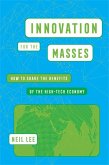"When George Floyd was murdered by a police officer in Minneapolis, half a million people showed up to Black Lives Matter protests. Between 15 and 26 million Americans participated in protests surrounding the deaths of George Floyd, Ahmaud Arbery, Breonna Taylor, and others. The New York Times ran the headline, "Black Lives Matter May Be the Largest Movement in US History." In The Rise of the Masses, sociologist Benjamin Abrams sets out to explain how such largely spontaneous movements arise. While most massive movements require tremendous resources and organizing, Abrams is interested in cases where people with no connection to organized movements take to the streets, largely of their own accord. He looks to the Arab Spring, Occupy Wall Street, the Black Lives Matter protests of summer 2020, and the historical example of the French Revolution to lay out a theory of how and why massive movements come together without the large-scale organization that usually goes into staging a protest. Drawing on first-person interviews and archival sources, Abrams claims that people organically mobilize when a movement speaks to their pre-existing dispositions and when structural and social conditions make it easier to get involved. Abrams lays out a novel explanation, Affinity Convergence Theory, to help us understand how and why these riots and protests mobilized so many people and explains the structural and personal factors that incite protests. And the historical and regional breadth of his cases give new insight into mass collective behavior. He explains how his findings can help explain other mass protests-the gilets jaunes in France or the Umbrella Movement in Hong Kong, for example-and even how affinity convergence theory can predict movements to come"--
Hinweis: Dieser Artikel kann nur an eine deutsche Lieferadresse ausgeliefert werden.
Hinweis: Dieser Artikel kann nur an eine deutsche Lieferadresse ausgeliefert werden.








